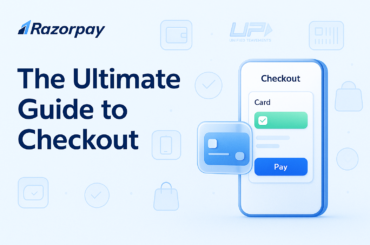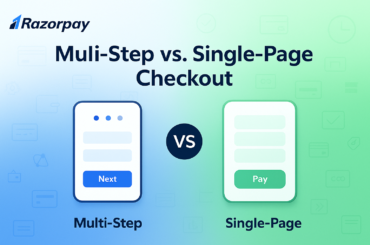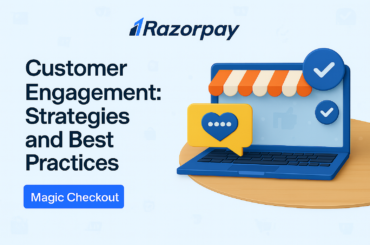Table of Contents
What is the Full Form of AOV?
AOV stands for Average Order Value. It is a crucial e-commerce metric that calculates the average amount spent by a customer each time they place an order on your website or mobile app. In simpler terms, AOV reveals the typical pound value of an order placed by a customer.
What is the Meaning of Average Order Value (AOV)?
The meaning of AOV goes beyond just highlighting profit margins. It provides valuable insights into your online store’s overall efficiency and helps identify areas for improvement. Average Order Value is considered one of the most significant metrics in the e-commerce industry, forming a part of the “metrics power triangle” alongside traffic and Conversion Rate.
Why is Average Order Value Important?
Tracking AOV is essential for several reasons:
1. Customer Behaviour Insights:
AOV sheds light on customer spending patterns. A lower AOV usually indicates that customers prefer to make smaller purchases with each order.
3. Business Decision-Making:
AOV trends influence crucial business decisions, such as product pricing and marketing strategies. Given the dynamic nature of e-commerce, companies should monitor AOV carefully on a daily or weekly basis.
3. Revenue Growth:
Every e-commerce company aims to maximise AOV because a higher AOV directly contributes to revenue growth and can boost profits. Increasing AOV is more cost-effective than acquiring new customers.
4. E-commerce Health Indicator:
A high AOV signifies that an online store is healthy and its marketing efforts are paying off. It shows that quality sales are being generated, leading to better revenue without necessarily requiring more traffic or improved Conversion Rates.
5. Customer Lifetime Value:
Increasing AOV also increases the lifetime value (LTV) of an online store’s customers, meaning they will spend more over their entire relationship with the business.
How Can You Calculate AOV?
To calculate Average Order Value, use the following formula:
AOV = Total Revenue ÷ Number of Orders
Here’s a step-by-step process to calculate AOV:
-
Determine the total revenue generated over a specific time period.
-
Count the total number of orders placed during that same time period.
-
Divide the total revenue by the total number of orders.
For example, let’s say an e-commerce store’s gross revenue in March was ₹50,000 through 2,000 orders. The AOV would be:
₹50,000 ÷ 2,000 = ₹25
This means that the average customer spent ₹25 per order that month.
7 Tips for Increasing Average Order Value (AOV)
1. Cross-selling
Cross-selling involves suggesting related products to customers based on their browsing and purchase history. By recommending relevant items, you can encourage customers to add more products to their cart, thereby increasing the AOV. However, it’s essential to limit suggestions to products within a reasonable price range to avoid overwhelming customers.
2. Upselling
Upselling is a technique where you offer customers higher-end versions or upgrades of the products they are interested in. This strategy can effectively increase AOV by encouraging customers to spend more on premium or feature-rich products. Be sure to highlight the added value and benefits of the upgraded products to justify the higher price point.
3. Volume discounts
Offering volume discounts is an excellent way to motivate customers to purchase larger quantities of a product. By providing reduced per-unit pricing on higher quantity purchases, you incentivize customers to stock up or buy for future use. This approach not only increases AOV but also helps build customer loyalty and encourages repeat purchases.
4. Free shipping
Setting a free shipping threshold slightly higher than your current modal AOV can encourage customers to add more items to their cart to qualify for free shipping. Studies show that 65-70% of consumers consider free shipping when making purchase decisions. By strategically setting the minimum order value for free shipping, you can drive up your AOV while providing a valuable incentive to customers.
5. Coupons
Offering targeted coupons or discount codes can be an effective way to increase AOV. For example, providing a coupon code for a percentage off the total order value above a certain threshold can motivate customers to spend more to avail the discount. However, be mindful of the impact on your profit margins and ensure that the increased AOV compensates for the discount offered.
6. Donations
Implementing a donation program can not only increase AOV but also enhance your brand’s social responsibility image. By offering customers the option to add a small donation to their order, you can tap into their desire to contribute to a good cause. Many customers are willing to slightly increase their order value to support a charity they believe in, ultimately driving up your AOV.
7. Return policy
A customer-friendly return policy can indirectly contribute to increasing AOV. When customers feel confident about their ability to return or exchange products if needed, they are more likely to make larger purchases. By offering a hassle-free return process and clearly communicating your return policy, you can build trust with customers and encourage them to spend more per order.
Important E-commerce Metrics to Consider
While Average Order Value is a crucial metric, it’s essential to consider other important E-commerce Metrics that provide a comprehensive view of your online store’s performance. Some key metrics to track alongside AOV include:
1. Conversion Rate:
The percentage of website visitors who complete a desired action, such as making a purchase.
2. Customer Lifetime Value (CLV):
The total amount a customer is expected to spend on your products or services throughout their relationship with your business.
3. Cart Abandonment Rate:
The percentage of customers who add items to their cart but leave without completing the purchase.
4. Bounce Rate:
The percentage of visitors who leave your website after viewing only one page.
By monitoring these metrics in conjunction with AOV, you can gain valuable insights into customer behavior, identify areas for improvement, and make data-driven decisions to optimize your e-commerce strategy.
How A/B Testing Can Help Increase Your Average Order Value?
A/B testing, also known as split testing, is a powerful method to optimize your e-commerce store and increase your Average Order Value. It involves comparing two versions of a webpage or element to determine which one performs better. By conducting A/B tests on various aspects of your online store, you can identify the most effective strategies to drive up your AOV.
Here are some elements you can A/B test to improve your AOV:
-
Product descriptions and images
-
Upsell and cross-sell recommendations
-
Free shipping thresholds
-
Discount offers and promotions
-
Checkout process and page layout
By continuously running A/B tests and analyzing the results, you can refine your e-commerce store to create an optimal shopping experience that encourages customers to spend more per order, ultimately increasing your Average Order Value.
Frequently Asked Questions (FAQs)
1. What is AOV used for?
AOV is used to gauge the average amount spent by a customer each time they place an order on your e-commerce store. It helps businesses understand customer spending patterns, make informed pricing and marketing decisions, and track the overall health of their online store.
2. What does AOV stand for in marketing?
In marketing, AOV stands for Average Order Value. It is a crucial metric that measures the average pound value of each order placed by customers on an e-commerce website or mobile app.
3. What does high AOV mean?
A high AOV indicates that customers are spending a significant amount per order on your e-commerce store. It suggests that your marketing efforts are effective, your product mix is appealing, and you have a loyal customer base willing to spend more on your offerings.
4. How does AOV work?
AOV is calculated by dividing your total revenue by the number of orders placed over a specific period. It provides an average of how much customers spend each time they make a purchase on your e-commerce store.
5. What are the benefits of AOV?
The benefits of tracking and optimising your AOV include:
-
Increased revenue and profitability
-
Better understanding of customer spending patterns
-
Informed pricing and marketing decisions
-
Improved customer lifetime value
-
Insights into the overall health of your e-commerce store
6. How to calculate AOV in Excel?
To calculate AOV in Excel, follow these steps:
-
Create a column for “Order Value” and enter the value of each order.
-
Create another column for “Number of Orders” and enter the number 1 for each order.
-
Sum up the “Order Value” column to get the total revenue.
-
Sum up the “Number of Orders” column to get the total number of orders.
-
Divide the total revenue by the total number of orders to calculate the AOV.
7. What’s the difference between AOV and Customer Lifetime Value (CLV)?
AOV measures the average amount spent by a customer per order, while Customer Lifetime Value (CLV) represents the total amount a customer is expected to spend on your products or services throughout their entire relationship with your business. AOV focuses on individual transactions, while CLV takes a long-term view of customer value.
8. How often should businesses track AOV?
Businesses should track AOV on a regular basis, preferably daily or weekly, to stay on top of any changes in customer spending patterns. By monitoring AOV trends closely, businesses can quickly identify any shifts in customer behavior and take proactive measures to optimize their e-commerce strategies accordingly.





